sunspot grouping AR 2403 in hydrogen alpha compared to broad spectrum (white light):
Ha single stacked, large chip camera full disk:
the prominences projecting off the edge out into space are much more faint, so i created a composite of this and a longer exposure which burns out the center (color version):
double stacked Ha for better contrast, capturing the filaments and prominences smaller chip camera which has a faster capture rate:
closer view of filaments and prominences upper right:
negative:
prominence only with over-saturated pixels blacked out:
Hydrogen alpha activity around sunspot grouping AR 2403:
close up version in white light showing the sun spots
Imaging details/discussion:
full disk Lunt 60 PT single stacked, on grab & go alt-azm mount, DMK 51
i switched to 60/50 double stacked as i thought higher contrast would make it easier to capture the prominence/filament juxtaposition upper right. The single stacked Ha band width is .7 anstroms, double stacked narrows it to less than .5 angstroms. this makes the surface filaments stand out more. since the double stack leaves a bit of a gradient with full disk anyway, i switched to my new planetary camera ASI 120 MM-S which isn't big enough for full disk, but it has a much higher frame rate--10x faster than the DMK when cropped.
the white light capture was done with an 8" SCT, baader photographic film an IR/UV cut filter and a 550x10nm filter with the faster ASI 120 MM-S camera. i tried 4 different filters: 540x10nm, 550x10nm, 8.5 nm OIII, 10 nm Helium. On quick switching with a filter wheel the 550x10 seemed slightly better than the 540x10. i then took a series of 6 20 second captures separated by a minute with the 550x10 filter hoping to capture some sort of motion. what i found was huge variation in seeing with 4 of the 6 captures showing mush and two showing some detail, making it difficult to really conclude whether one filter was better than the other.
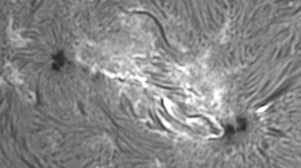
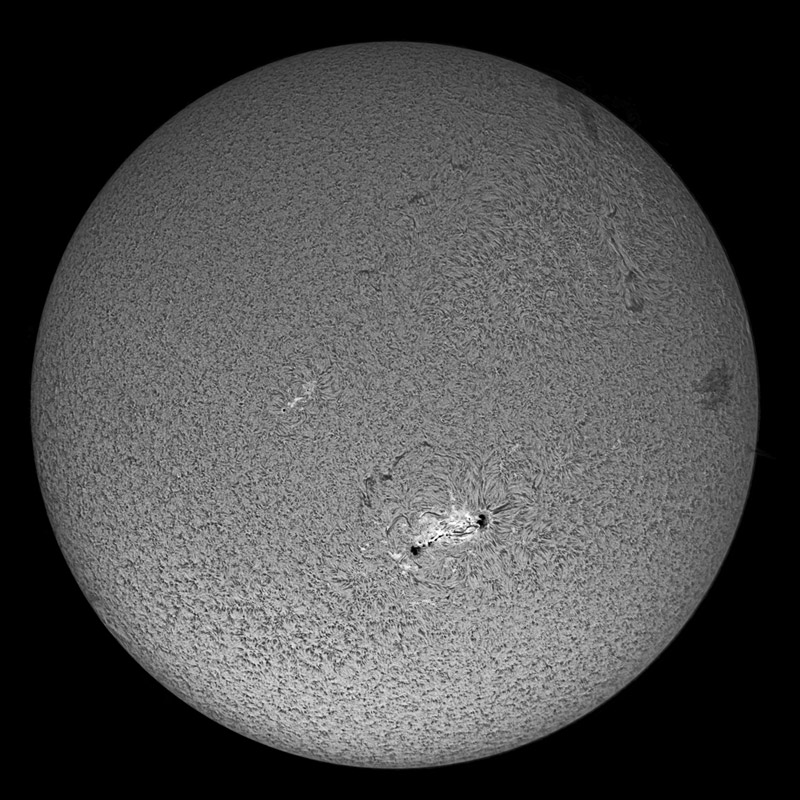
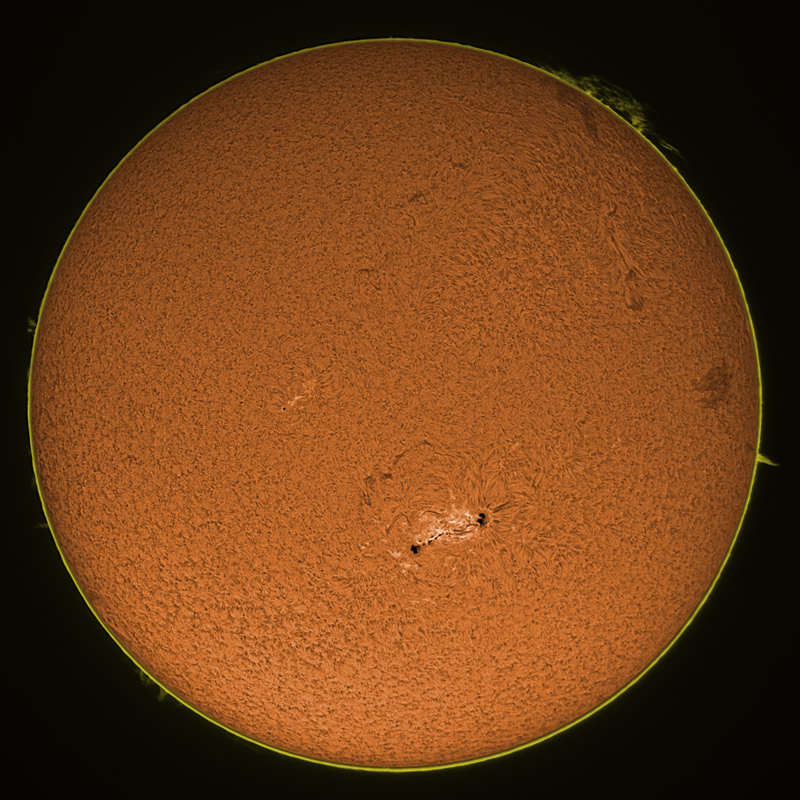
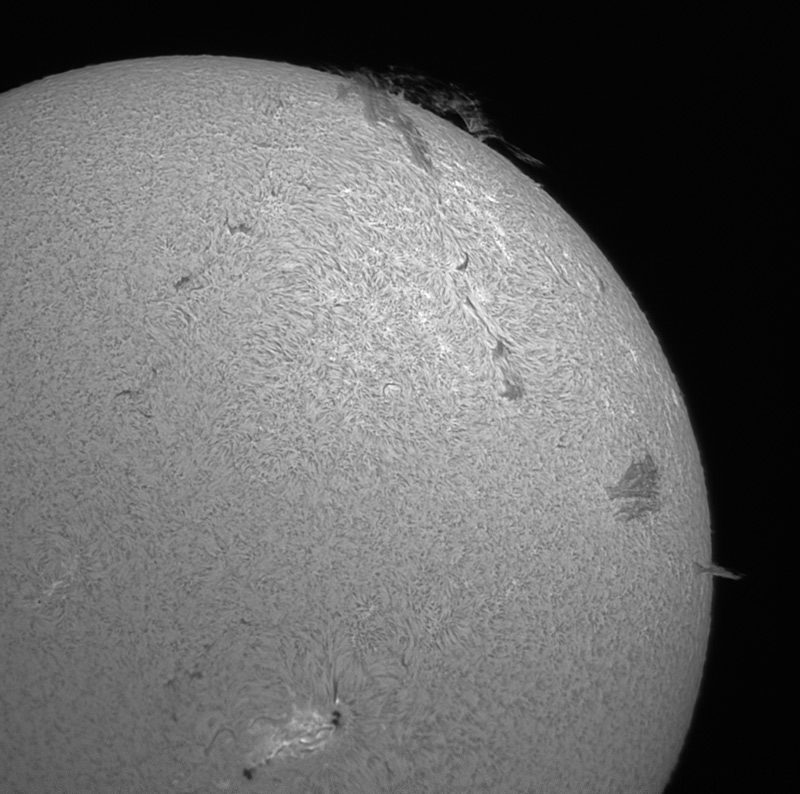
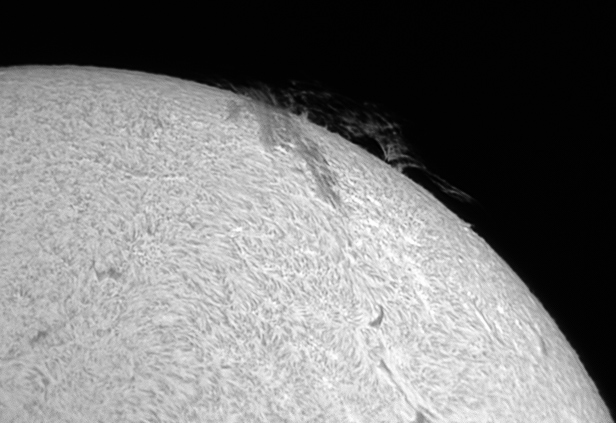
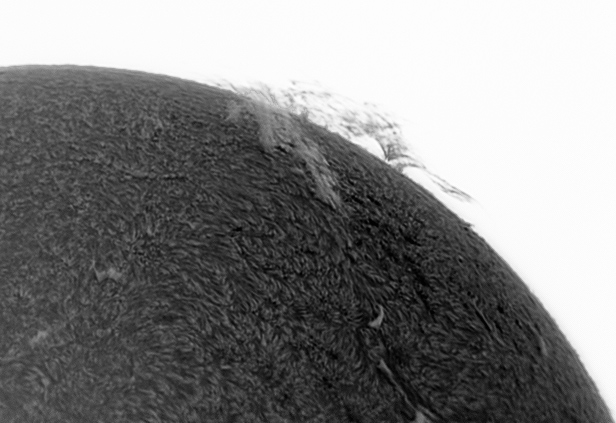
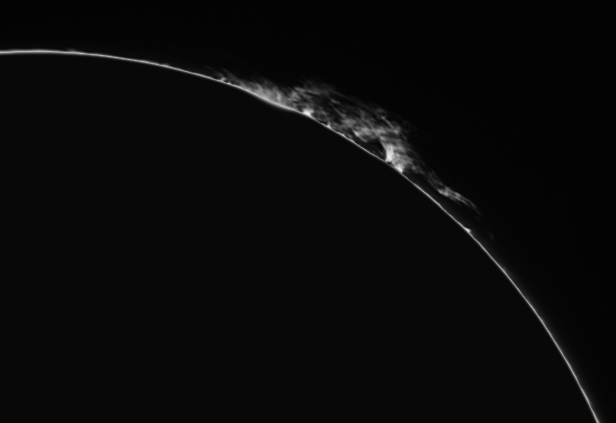
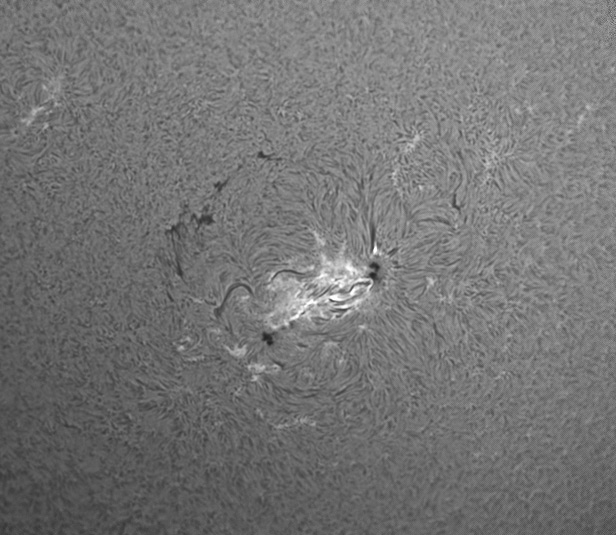
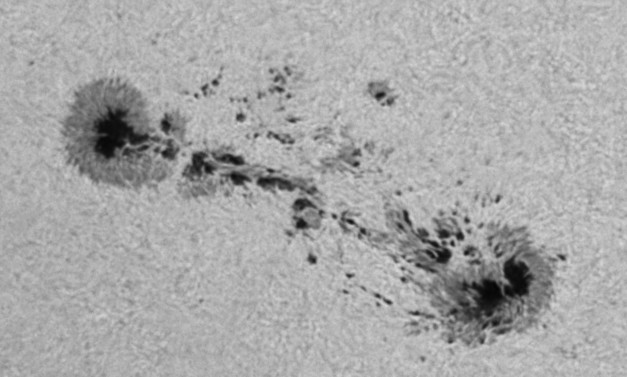
No comments:
Post a Comment